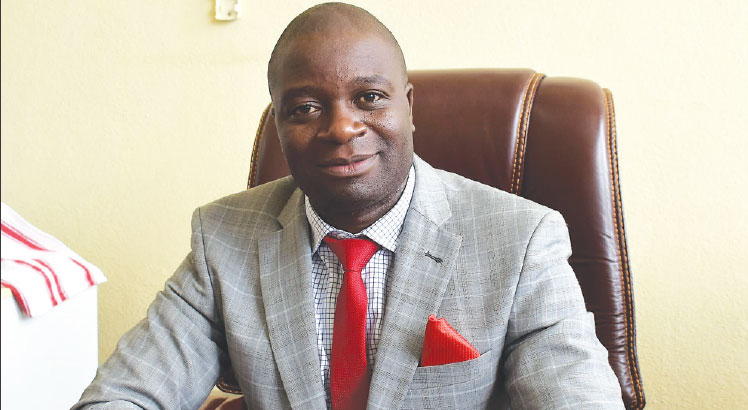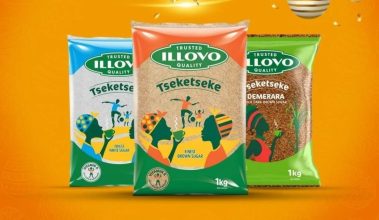Encounters with moya malamusi
My encounters with him have always been brief, but the impact Dr Moya Aliya Malamusi has left will remain undented.
He is, as some would say, the giant who lets the works of his hands speak for him.
Some would be surprised why Malamusi got the arts category award in the Malawi Broadcasting Corporation’s (MBC) Innovators Awards last Friday, but those who care about Malawi music, art and culture would appreciate the cultural anthropologist and ethnomusicologist has gone a long way in putting authentic Malawi music on the world map.

The awards, where President Peter Mutharika played the contradicting double role of being guest of honour and host at Kamuzu Palace in Lilongwe, saw deserving winners in arts, environment, health, sports, business, education and science get awards.
I don’t remember when I first met the soft-speaking Malamusi, but I am certain it must be after May 2010 when I visited the Jacaranda Museum of Ethnographic Objects with my colleague James. The museum, which Malamusi founded with his sister Lydia, is situated in Singano Village in Chileka, Blantyre. This is undoubtedly one of Malawi’s musical villages, being home to generations of great musicians: Daniel and Donald Kachamba, Robert and Arnold Fumulani, Evison Matafale and the current breed trading as Black Missionaries Band.
What was supposed to be a simple Friday morning tour to a little-known museum a stone throw from the Chileka Airport ended up being a deep and rich discovery of Malawi culture, arts and history. It was a heart-warming rediscovery of a Malawi life lost or being lost with age.
What can be more touching than seeing gule wamkulu paintings on the walls, paintings and photos depicting all forms of Malawi life, devices like nkhwangwa, khasu, mono, musi, lichero, mtondo displayed side-by side with loads of Malawi traditional music instruments (from bangwe to mbira through ulimba and ng’oma of all shapes and sizes).
Then, there was a carving of a Stagecoach double-decker bus reminding you of the early 90’s transportation. When you thought Malawi painting stagnated at the overtly popular Imfa Siyithawika painting, the collection in the museum contained another deep set of paintings depicting Malawi life and ethos. Kukonola mphale ya ukwati was one; another declared Akukana kuwachotsa ufiti while another was quite biblical: Tsiku lakufa liposa lobadwa. Being a visitor, you are brought down to earth with another painting: Musiye mwano obwera inu.
Such is the depth of the museum that I wanted to know more about the man behind it all. It is then that I discovered he is mostly across the globe, especially in Austria and Germany, bringing Malawi music and culture to the world. The ethnomusicologist lectures at various universities, including the University of Vienna in Germany.
The chance came when Malamusi was in the country some time in 2012. There were five of us on that table at the Njamba Eating House in Blantyre. I joined him to lunch, together with his fellow ethnomusicologist Waliko Makhala, Blantyre Newspapers Limited (BNL) journalist Clifton Kawanga and Professor Dr Wolfgang Bender of the Centre for World Music at a German university, Stiftung Universat Hildesheim. The German government, through the university, were supporting Malamusi’s CD and DVD project.
Bender and Malamusi had just finalised working on it. It was titled Endangered Traditions—Endangered Creativity. Just as the name suggested, the work was a compilation of Malawi works on the brink of being lost: men and women playing traditional instruments like alimba, bangwe, chitata; men and women dancing ingoma, nyimbo za pamtondo and likhuba; men and women narrating nthano or ndano. On the whole, it is a repository of the cultural heritage of Malawi’s 11 districts.
“This is one of the results of my field work. It is an attempt to document Malawi musical traditions in danger of being lost. Not only does it include historical dance traditions, it is also preserves traditional music instruments and oral literature,” he said.
Fast-forward to August 2013. I was on the road to Chileka with American saxophonist Rick Deja as Malamusi was at his base, which also houses the Oral Literature Research Programme. He was not alone. There was also Dr Gerhard Kubik. Kubik, the world knows, picked young Daniel Kachamba from the streets of Blantyre and introduced him to the world with his renowned pen flute and banjo skills.
Kubik and Malamusi are part of a five-member band, the Donald Kachamba Memorial Jazz Band, in honour of the musician who alongside his brother, Daniel, was a proponent of kwela music. Questions still abound whether kwela was imported from South Africa (where afro-pop groups like Mafikizolo at times still propel it) or it was exported from Malawi by migrant theba workers.
The night after the Chileka meeting, the band was performing at Art House Africa in Sunnyside and this was a not-to-miss performance. It was a night of kwela, reviving the Kachamba memories with such songs as Chosamvana and Alelema. With Malamusi playing the one stringed bass, Kubik on guitar, Sinosi Mlendo playing the pen flute and Christopher Gerald on shattles, it was a performance to remember. It ran alongside an art exhibition by Elson Kambalu.
It was Malamusi’s words during the show that remain to the heart, even after all these years: “There are a handful of people that know how to play indigenous music instruments and when they die, their talent goes with them.”
Lucky we still have Malamusi in our midst. It was just apt to give what belongs to him as he lives. n





